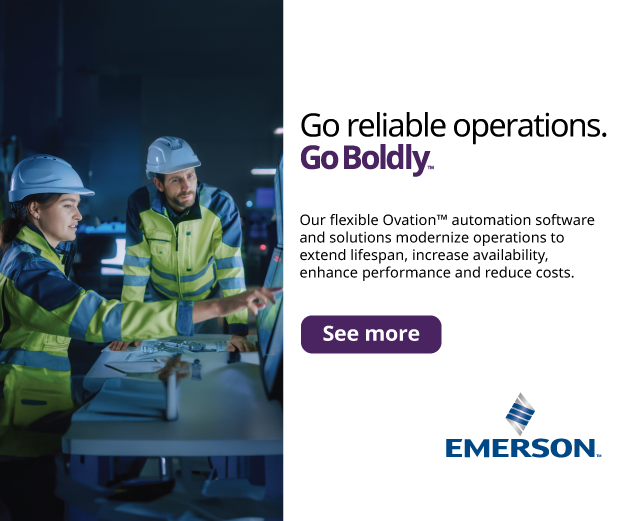By Shawn Flake, NAES Corp, and Stacy Willis and Dave Gebhard, Veolia Water Technologies and Solutions
Faribault Energy Park, a 300-MW gas-fired combined-cycle facility located in southern Minnesota, represents a significant investment in sustainable energy infrastructure. Owned by the Minnesota Municipal Power Agency (MMPA) and operated by NAES Corp, the plant was commissioned in 2007.
Initially, Faribault used mobile ion-exchange trailers for steam makeup water because of restrictions on discharging wastewater from a reverse-osmosis (RO) system. This setup posed operational challenges, particularly during Minnesota’s harsh winters, leading to icy conditions and potential safety hazards (Fig 1).
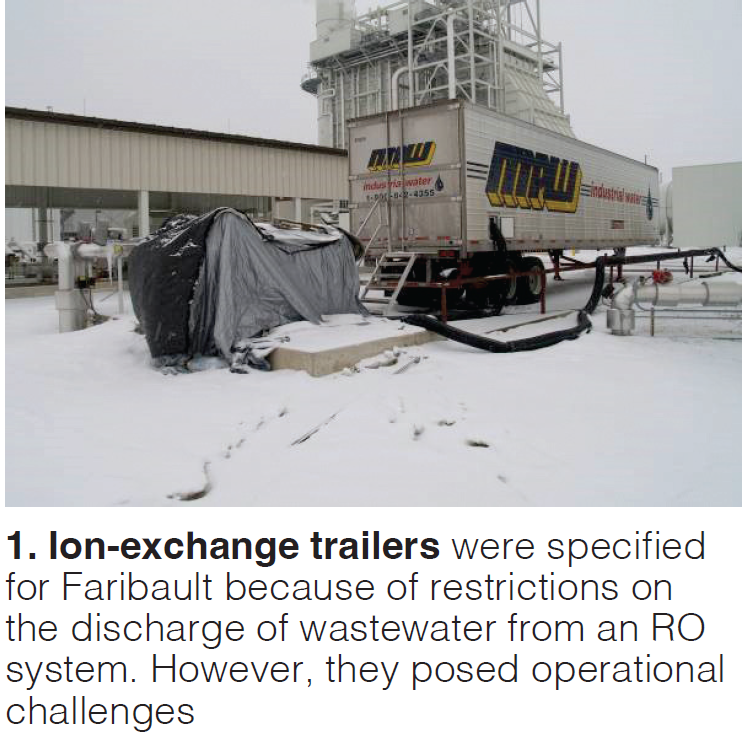
To address these issues, a plan was developed to construct a heated building for the mobile trailers, with provisions for a permanent water treatment system contingent on obtaining a permit to discharge RO reject water to the cooling tower.
In 2010, a permanent water treatment system was installed, and in 2012 Faribault received a Best Practices Award from CCJ for its design. The system included ultrafiltration (UF), two-pass RO, and polishing with exchange-service mixed-bed deionization (MBDI) vessels.
This strategic move aimed to enhance operational efficiency, reduce costs, and improve safety. Fourteen years later, the analysis that follows examines whether the original business case for the permanent water treatment system has been realized, evaluating its performance and cost savings as compared to initial projections.
The first step was to develop and receive approval for the plan to account for the reject stream. MMPA, in coordination with the cooling-tower chemical service provider, presented a plan to the municipal regulators. It showed the RO concentrate was of similar quality and less than 0.01% of the cooling-system volume and would have minimal impact to blowdown water composition. Approval for the plan was received from the municipality.
The plant is supplied water from a well that feeds the multi-pond storage system prior to entering the plant. The pond system also collects rainwater from the area and provides buffer capacity during periods of peak demand. In addition, the ponds are open to the public for recreational sport fishing. The pond system experiences high turbidity peaks and high water-temperature variability, which introduce challenges for a membrane system design.
Plant personnel drafted a detailed RFQ and solicited equipment proposals from water-industry OEMs. Mechanical design and installation were completed in-house by collaborating with both the OEM selected for overall process design and a local electrical contractor.
The plant provided feedwater-quality and boiler-feedwater specifications to drive the process design. To achieve the required product-water quality, the team selected a design consisting of a two-pass RO system feeding exchange-service MBDI vessels for polishing the final product water to meet specifications.
An additional challenge identified was that the existing multi-media filter (MMF) used for cooling-tower makeup water would not meet RO membrane feedwater requirements specific to turbidity and silt density index (SDI) values. OEMs proposed solutions ranging from coagulation with a second MMF to pressurized ultrafiltration (UF).
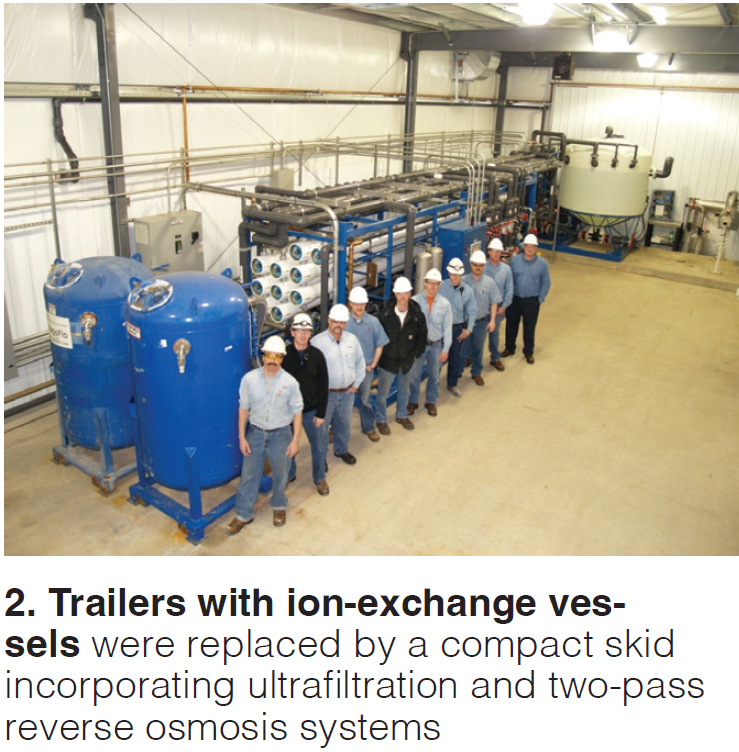
Given the variable water quality and temperature, UF was selected to pretreat water flowing to the RO system. It provides superior and consistent water quality compared to conventional media filtration and is fully automated, including CIP (clean in place).
UF can filter particulate matter down to 0.1 micron as compared to MMF’s typical 20-micron capability. The coagulation + MMF would have required higher operator involvement for chemical and operational adjustments because of turbidity levels and temperature variability. Veolia Water Technologies and Solutions was selected and provided a UF and two-pass RO in a compact skid design system (Fig 2), which is located in the clean-water building (Fig 3).
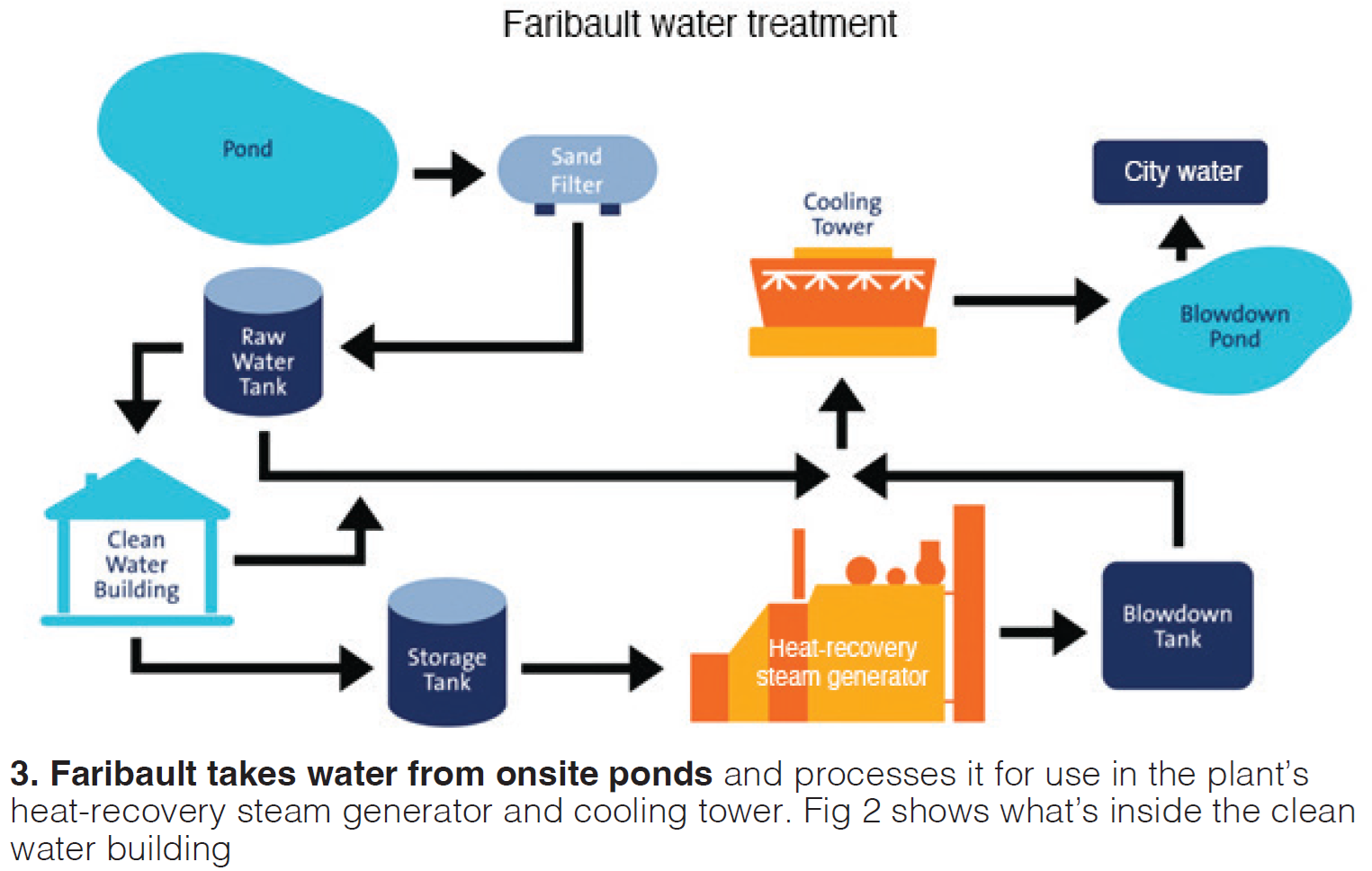
Performance highlights
The UF system undergoes a standard automatic maintenance clean three or four times weekly, plus an offline recovery clean quarterly. The UF membranes are replaced after seven years of service versus the original estimate of five years. Savings versus budget for UF membranes totaled about $58,000.
The feed turbidity to the UF unit varies significantly as the existing MMF upstream provides coarse filtration of pond water while the UF filtrate is exceeding feed specifications for the RO. By the numbers:
- Average feed turbidity, 45 NTU.
- Maximum feed turbidity, 190 NTU.
- UF effluent turbidity, <0.2 NTU.
RO (two pass)/MBDI exchange. RO maintenance over the last 14 years included quarterly membrane cleanings and replacement of a few instruments, rebuilding of a couple of valve actuators, and standard pump service. Personnel estimate that an average of 15 min/day is spent on data collection and general maintenance.
Based on water sampling completed in March 2022, with original membranes operating for 12 years, the water quality was as follows:
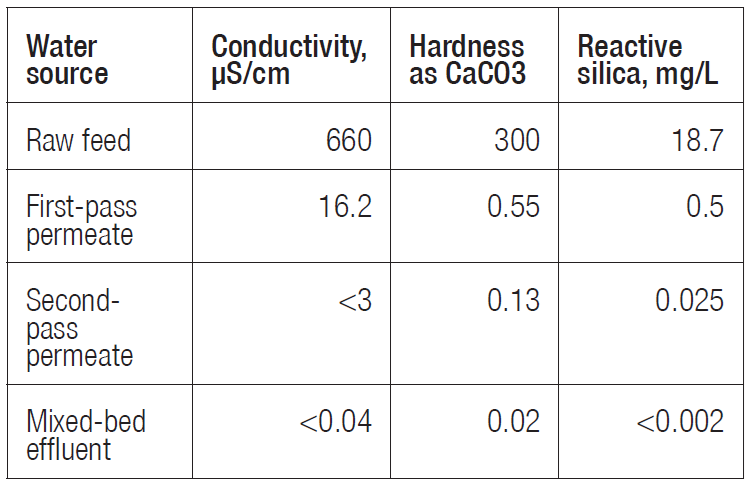
RO membranes were replaced in February 2024 after 14 years of service, versus the original projection of five years. The membrane reload took plant personnel four hours with OEM support. Saving based on membrane life versus budget was about $10,000.
Business case, benefits
The business case for the permanent water treatment system included these several key benefits:
- The capital system provided a simple payback of 1.52 years versus the projected 1.8 years.
- Over the 14 years evaluated, the system saved MMPA stakeholders $4.9 million in operating costs—savings attributable primarily to removing ion-exchange trailer fees.
- It was estimated that the project avoided 25,000 miles of semi-truck transport for the mobile deionization, equivalent to 37 metric tons of CO2.
- The system mitigated safety hazards associated with transportation, ice buildup, and other weather concerns. Plus, there have been no recordable accidents associated with the plant water system.
In conclusion, review of all available data demonstrates the project met or exceeded the initial investment case and contributed towards stated objectives of the stakeholders—including MMPA, NAES, and the MMPS member cities, board of directors, and community. The project lived up to its 2012 recognition for best-in-class design and has exceeded expectations in delivering critical financial and environmental benefits for the MMPA stakeholders.
Finally, Veolia Water Technologies and Solutions contributors to this article included the following: Brian Wise, Todd Langford, and Derek Brandt. CCJ






